Of the 270-plus of bees in the UK, 24 are bumblebees, just one is the well-known honeybee, and the remaining 200-plus are solitary bees. These solitary bees are incredibly varied in how they look and behave – from the fluffy bumble-like hairy-footed flower bee to the parasitic nomad bee.
You can cater for solitary bees in your garden by providing different habitats, flowering plants and even some manmade constructions: bee hotels.
Head over to our wildlife gardening hub for more advice, reviews and how-to guides, including garden bird nestbox guide, how to make a bee hotel, and best wildlife gardening books.
What is a bee hotel and which species will use one?
A bee hotel is an artificial structure for the nests of solitary bees. Although the females have separate nests, they can nest close together – this can be true for non-bee hotel using species too. For example, female ashy mining bees can be found nesting next to each other in sunny patches of short grass.
The bee hotel is mimicking the natural cavities that these solitary bees would use, such as holes in wood or hollow plant stems.
A female bee will lay an egg within the tube of the bee hotel and provision it with pollen mixed with nectar, and then sealing it up with dirt or leaves to create a nest cell. A tube will gradually be filled with nest cells.
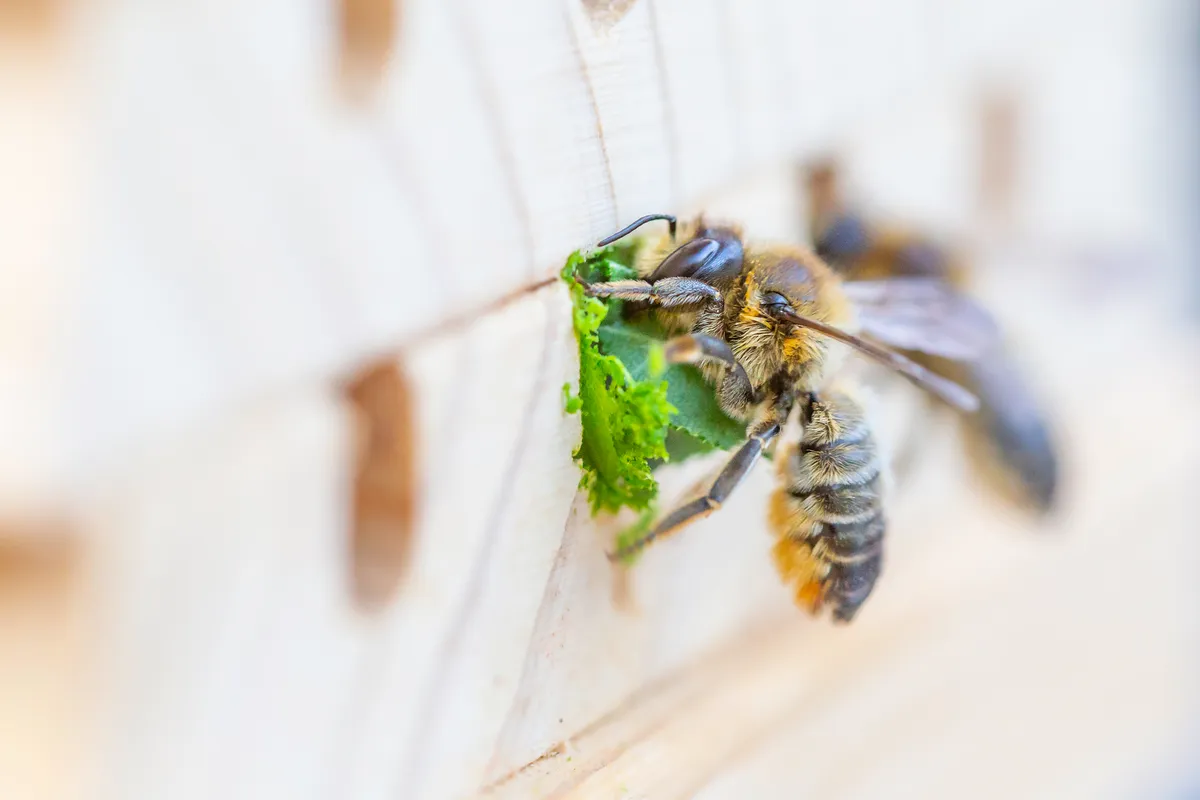
Bee hotels can be used by different species:
- Red mason bee (Osmia bicornis)
- Blue mason bee (Osmia caerulescens)
- Orange-vented mason bee (Osmia leaiana)
- European orchard bee (Osmia cornuta) - recorded in the UK for the first time in 2017.
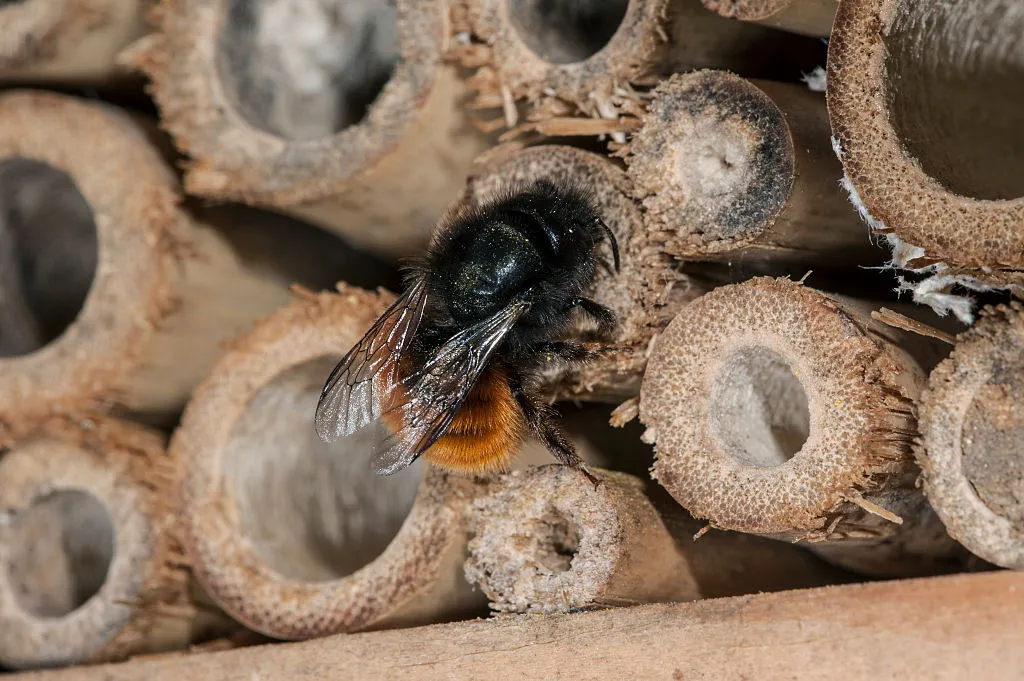
- Patchwork leafcutter bee (Megachile centuncularis)
- Willughby's leafcutter bee (Megachile willughbiella)
- Common yellow-face bee (Hylaeus communis)
- White-jawed yellow-face bee (Hylaeus confusus)
- Wool carder bee (Anthidium manicatum)
- Large-headed resin bee (Heriades truncorum)
- Small scissor bee (Chelostoma campanularum)
You may also spot some wasp species around your bee hotel, some of which are non-parasitic (such as Ectemnius spp. andPassaloecus spp.) and will also use the hotel's tubes to lay their eggs.
However, the nests of solitary bees and wasps can attract both parasitoids and predators. A female parasitic wasp (such as Gasteruption jaculator or Monodontomerus obscurus) will insert her ovipositor into the nest cell and lay an egg. Her eggs will hatch and feed on both the bee larva and its pollen food larder.
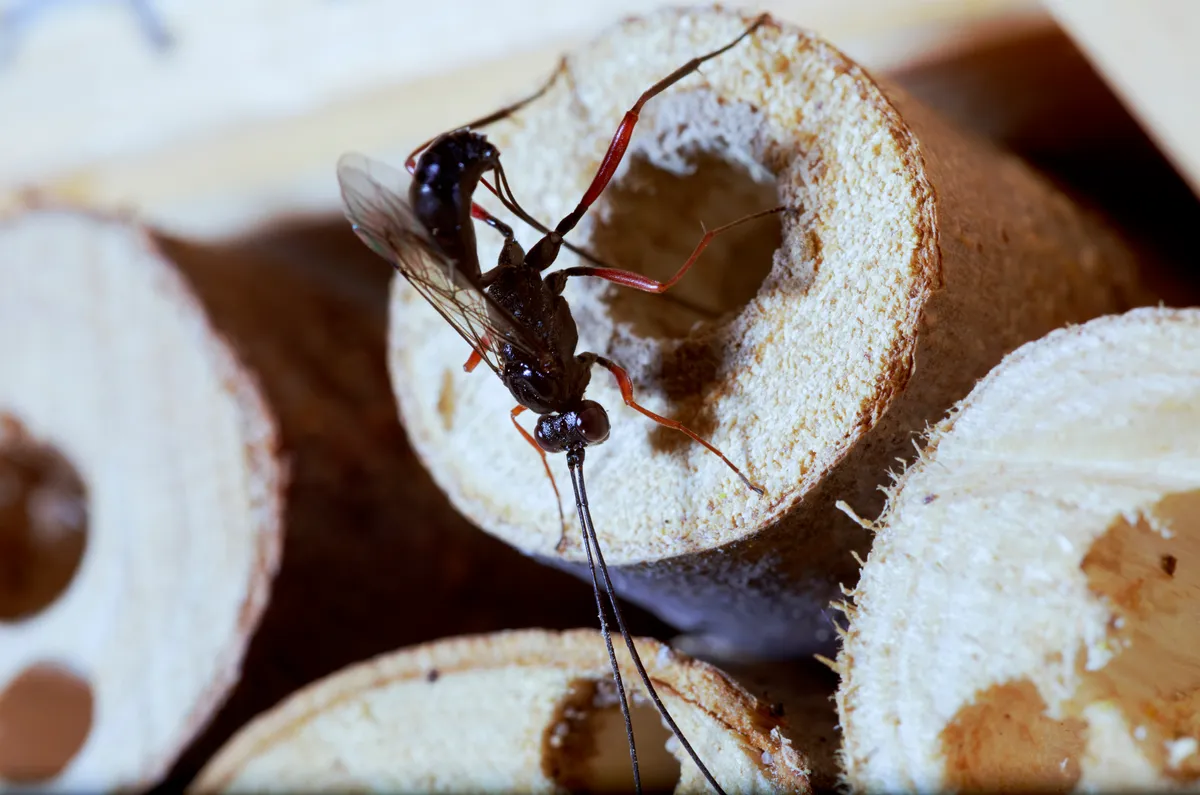
Bee hotels can also attract predators in the shape of birds – great spotted woodpeckers and great tits are both known to feed on the young bee larvae inside the nest cells. A piece of chicken wire over the top of the bee hotel may deter some predation but considering a great spotted woodpecker's tongue can extend 40cm beyond its beak, the wire may not do much against that.
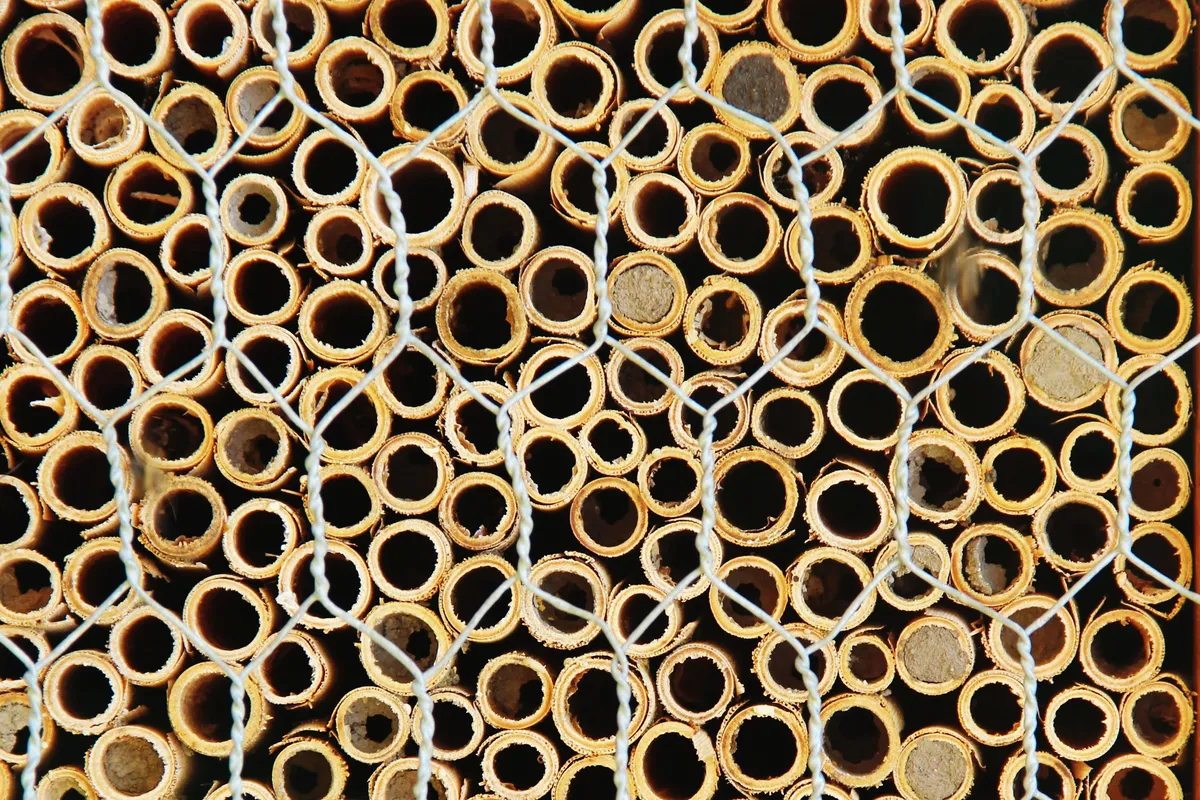
How to put up a bee hotel

Bee hotels should be firmly fixed at waist to chest height in a sunny position, south or southeast-facing is generally the best. Ensure there's no vegetation directly in front of the bee hotel that would completely hide it. Place it near bee-friendly plants.
Best bee hotels for your wildlife garden
Wildlife World (Interactive) Solitary Bee Hive
- Buy now from Wildlife World (£29.99, non-interactive), Wildlife World (£34.99, interactive).
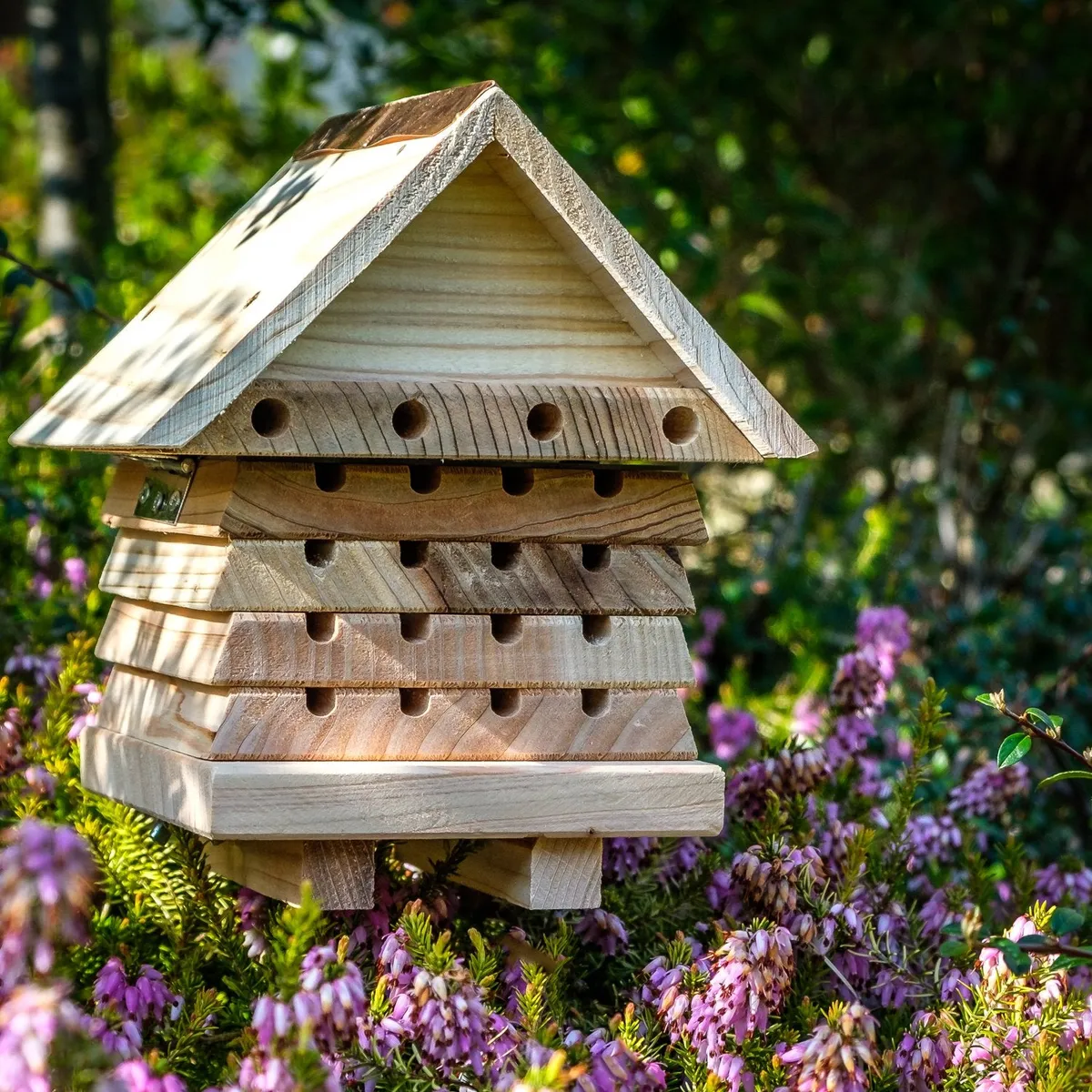
There are two versions of this bee hotel available, one of which is ‘interactive’ (pictured above).
A little misleading in the name perhaps, since the word ‘hive’ is usually only used when talking about the manmade hives for honeybees, this is one of the most popular bee hotels in my garden, having been fully booked out over winter by red mason bees (see below for one of the male bees emerging in spring 2022).
The interactive element comes from being able to lift up the roof section (including the top layer of nests) to reveal a perspex-covered tray, should you want to take a look and monitor the nesting activity of the bees and the development of the larvae.
The wood is made from FSC-certified timber, and the bee hotel measures 210 x 180 x 155 mm.
RSPB
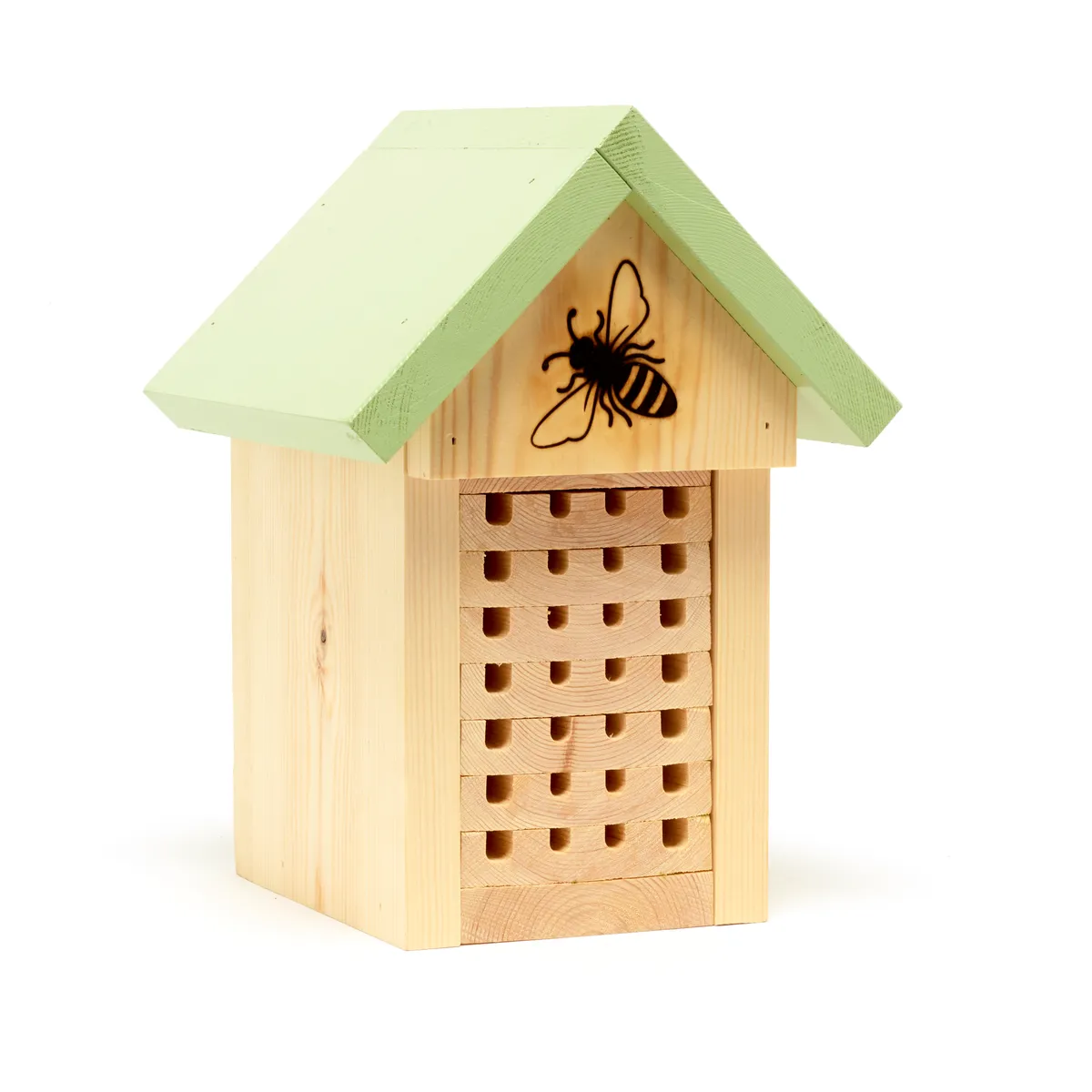
Made in the UK from FSC-certified pine timber, this bee hotel has removable nesting trays, should you wish to inspect or to clean out your bee hotel. The roof is overhanging, to protect bees from the rain, and is painted with non-toxic paint in a sage green colour to match the garden bird nestboxes range.
There are two sizes of hole – 8mm and 10mm, for red mason and leafcutter bees, and they have a depth of 15cm. A bee image is stamped into the top part beneath the apex roof.
This bee hotel comes with a pack of the RSPB's ‘Best for bees’ wildflower seeds in recyclable paper packaging and printed with vegetable based inks, with the typical mix consisting of 30% Cornflower, 30% Phacelia tanacetifolia, 20% Borage, 10% Echium 'Blue Bedder', 10% Poppy.
Wildlife World Dew Drop Insect House
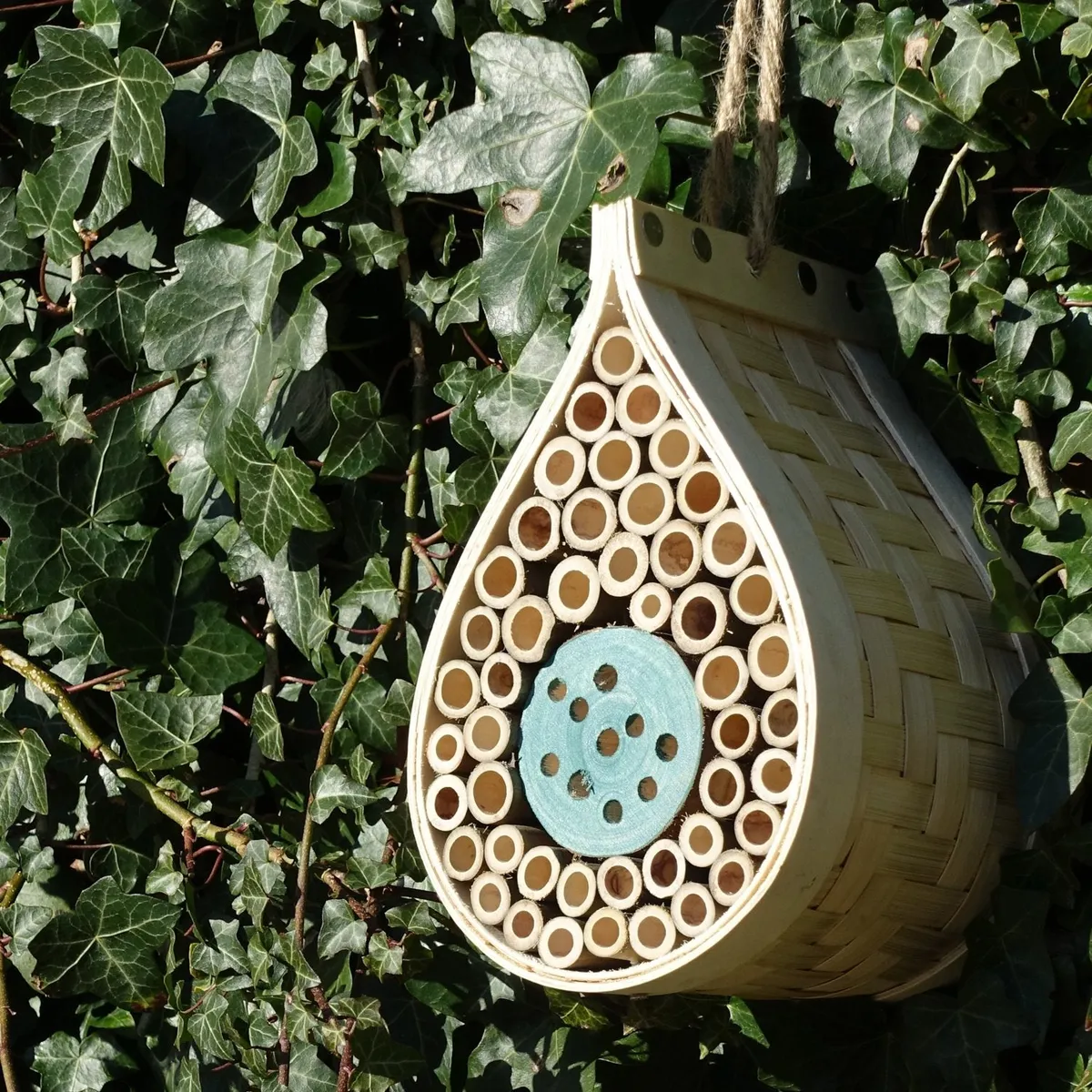
This pretty bee hotel is made from FSC-certified timber with a woven bamboo finish on the sides, surrounded nesting tubes made from bamboo and a central aqua blue log (painted with non-toxic paint).
The dimensions of the hotel are 230 x 140 x 135 mm.
I worry about hanging up a bee hotel, and it getting blown about the wind or by animals, and the larvae getting knocked around inside, so instead I secured it in place. I put it out in the first week of May and it was quickly investigated by red mason bees, and within a week, one of the tubes had already been filled with eggs by a female.
Update early July: female leafcutter bees have started using the larger bamboo tubes.
National Trust Hexagon Insect Habitat
- Buy now from National Trust (£14.00).
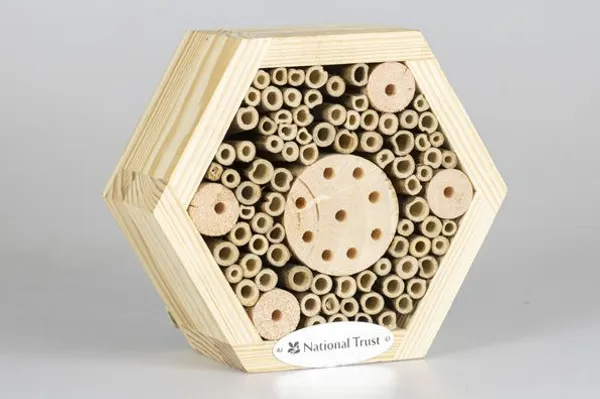
Produced by CJ Wildlife for the National Trust, this hexagonally shaped bee hotel is made from wood with bamboo canes and short logs with drilled holes. The dimensions are 16cm height, 16cm width and 8cm depth, with the latter a bit shorter than the usually recommended length for bee hotel canes.
Apples to Pears Build A Bee Hotel Gift In A Tin
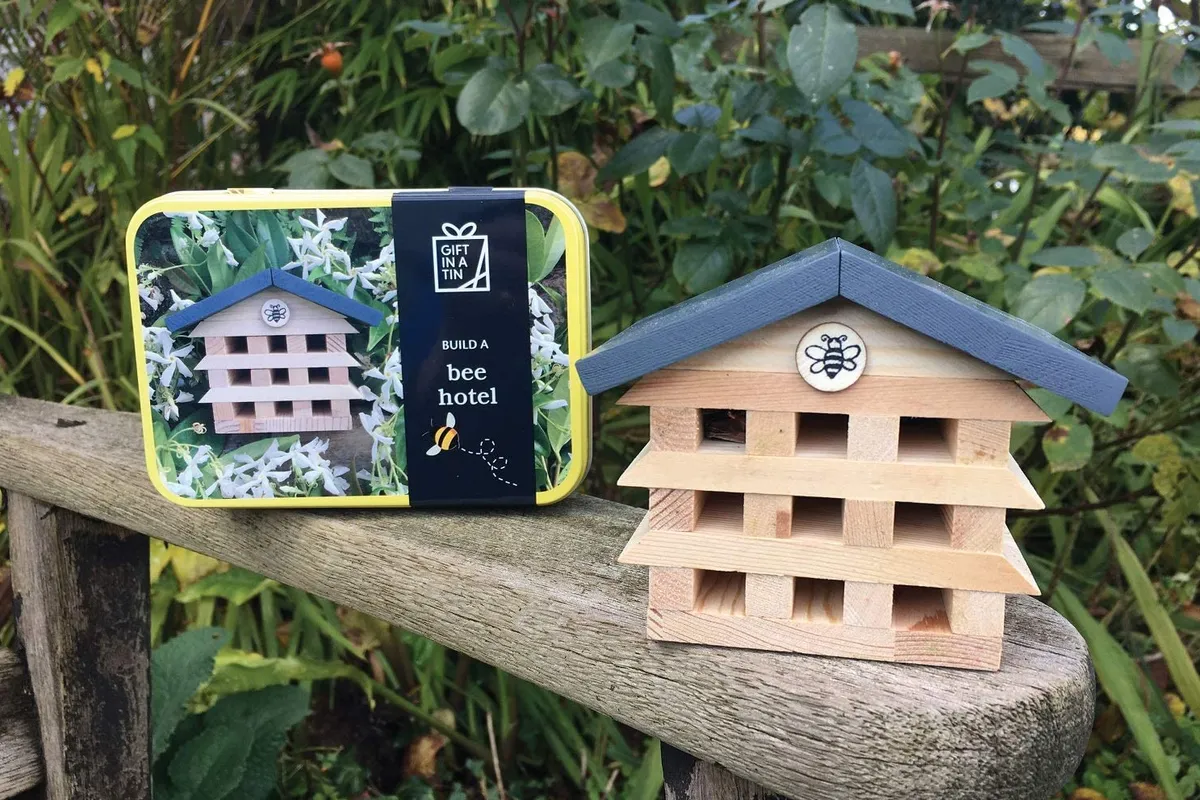
This cute little Do-It-Yourself kit comes in a nice little tin, and is recommended for ages six years and above. It was awarded Gift of the Year Highly Commended 2020 and was a Gold Winner in the Made for Mum Toy Awards 2021. It's designed in the UK and made in China, and consists of wooden parts, a small bottle of glue and a sheet of instructions and basic information about solitary bees. I found it very easy to follow the instructions and put together, though the final roof part required quite a bit of a thump to get it into place (prompting some curious looks from colleagues in the office!).
Although cute, it didn't seem to interest my local red mason bees, aside from when they occasionally landed on it to rest.
Cameron Bespolka Trust Bug Box
- Buy now from Cameron Bespolka (£16.00).
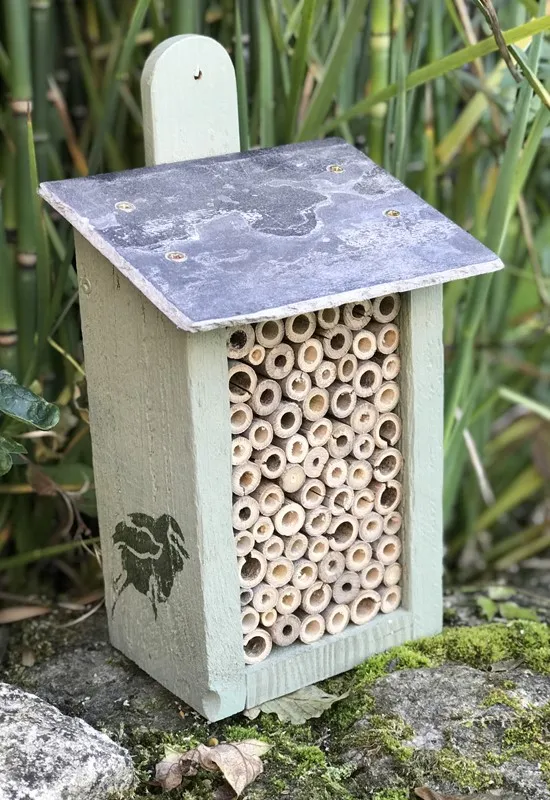
This bee hotel (labelled as Bug Box on the website) is handmade in Hampshire by the Minstead Trust, a charity supporting people with learning disabilities, and is made from untreated timber with bamboo canes and a slate roof. It's stamped with the bird logo of the Cameron Bespolka Trust, and the colour matches the Trust's bird nestboxes and hedgehog house.
It measures 3cm high x 14cm wide & 12cm deep.
Capi Europe
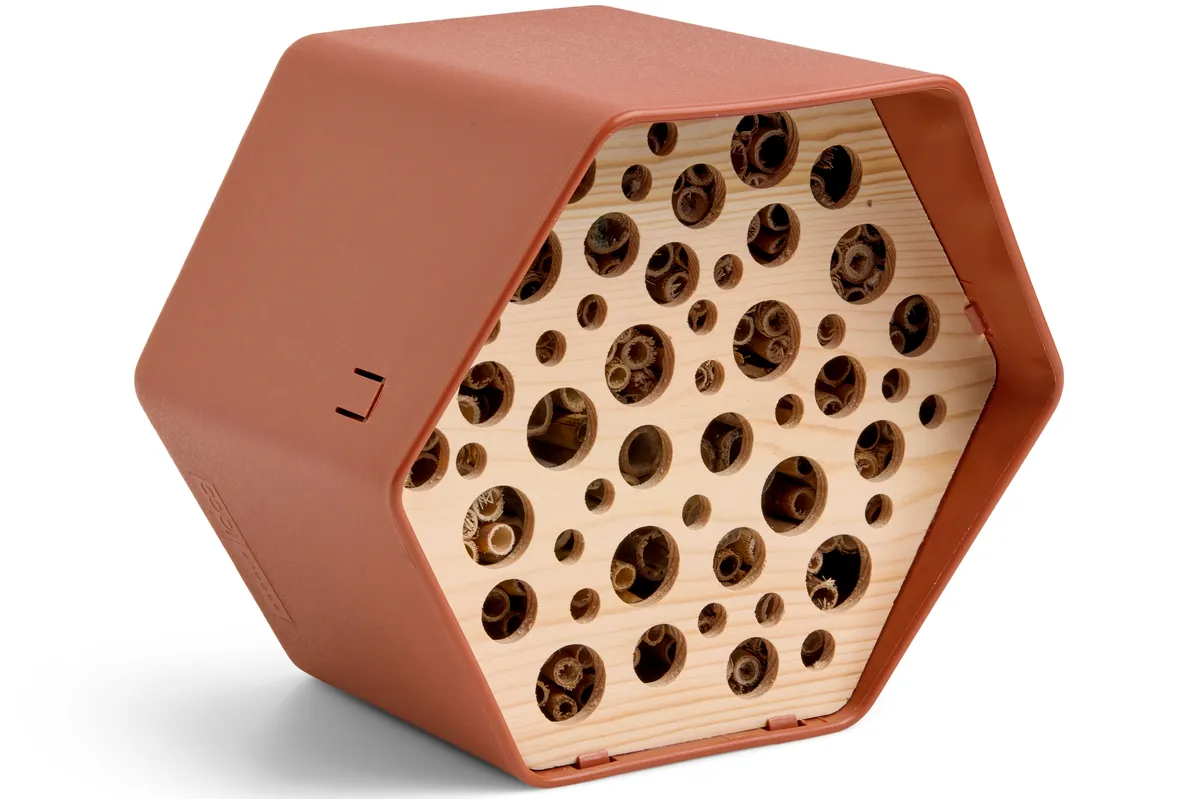
As part of its Capi For Biodiversity range, Capi Europe has created two bee hotels – one hexagonally shaped and one oval shaped, the first is available in two colours (orange and black) and the second in three colours (red, black, and white). The bee hotel is filled with bamboo tubes, and vary in size from 3mm to 8mm. The oval one measures 24cm × 18.5cm × 23 cm.





